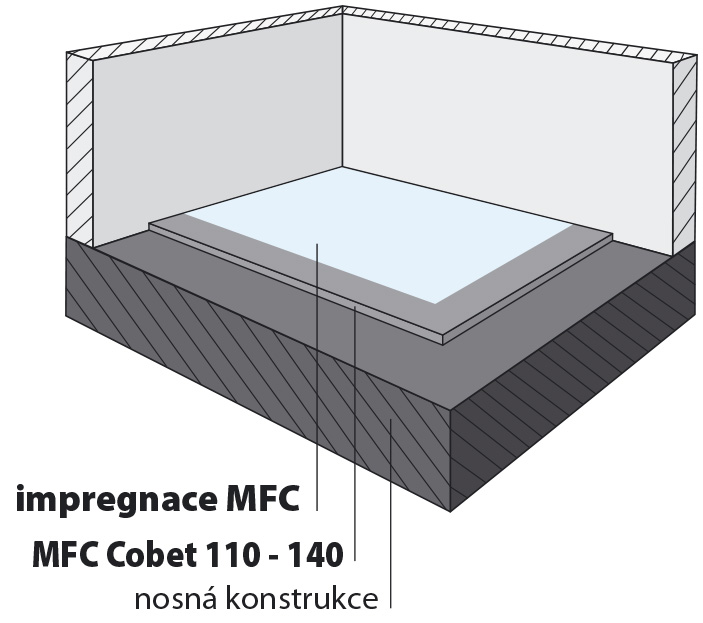MFC "dry to wet" (mineral fillings)
- Using mechanisation
- High productivity
- Low purchase price
- Colour options
This is a basic way of improving the surface of industrial concrete floors, which consists in applying 3 to 5 kg / m2 of the bulk material to the surface of the solid, pre-levelled and compacted concrete mixture. Subsequently, the surface is smooth with rotary trowels according to the gradual hardening of the concrete to the required quality. The result is a monolithic floor structure with an abrasion-resistant and dust-free surface at a layer thickness of about 2-3 mm.
System benefits:
- Using mechanisation
- High productivity (500 - 5000 m2 floor areas per day)
- High resistance to abrasion (BCA, Böhme method)
- Colour options
- Low purchase price
Materials used
Pour-ins: cement-based mixture, filler and special additives. It is supplied as a ready-to-use wet dry mixture to "dry-to-wet" system. Individual products differ primarily in the type of abrasion-resistant aggregate (silicon, metal, corundum, carbide).
Impregnations: liquid preparations that are applied shortly after surface finishing is completed. They are designed as a protective spraying or coating to prevent the evaporation of water from the concrete, thus effectively minimizing plastic deformations and increasing the hydration degree for about 3-4 weeks.
| Materials used: | |||||
|---|---|---|---|---|---|
| Pour-ins | MFC Cobet 110 | MFC Cobet 115 | MFC Cobet 120 | MFC Cobet 130 | MFC Cobet 140 |
| Impregnation | MFC Stoplak 610 | MFC Curol SiT 60 | |||
Compositions:
 |
 |
 |
Usage
These materials are designed for surface treatment of fresh concrete floors in civic and industrial buildings. They improve surface processing, flatness, and resistance of the surface to mechanical loads.



